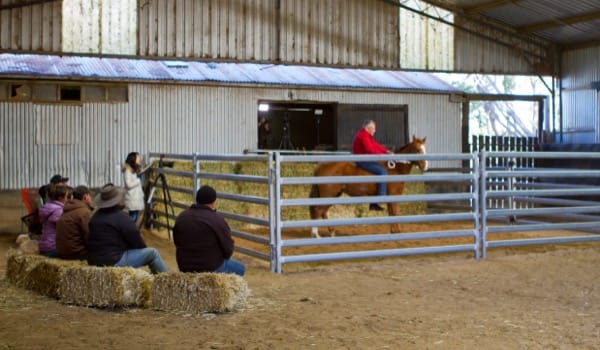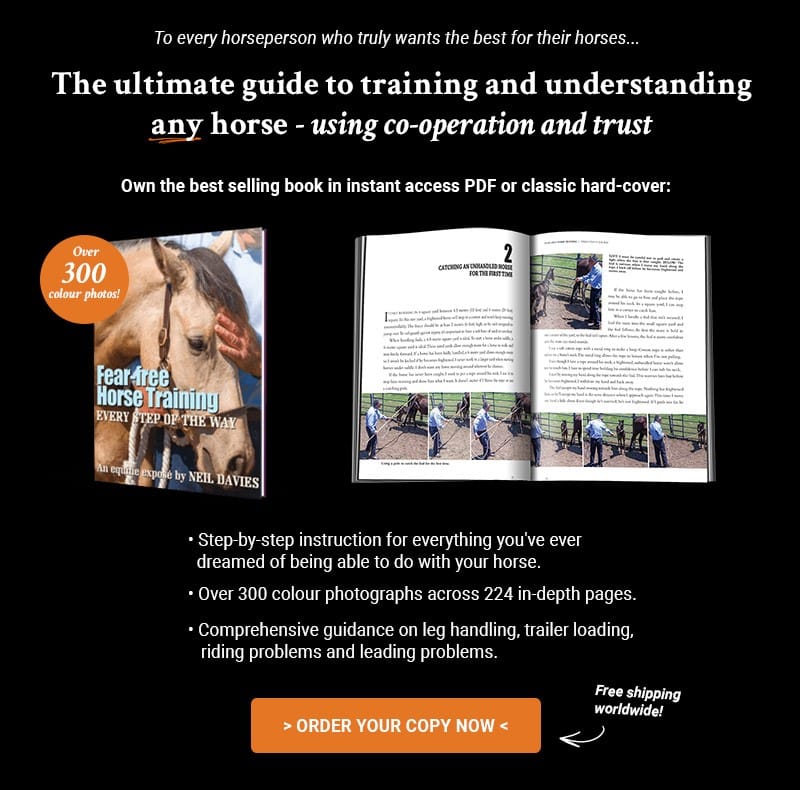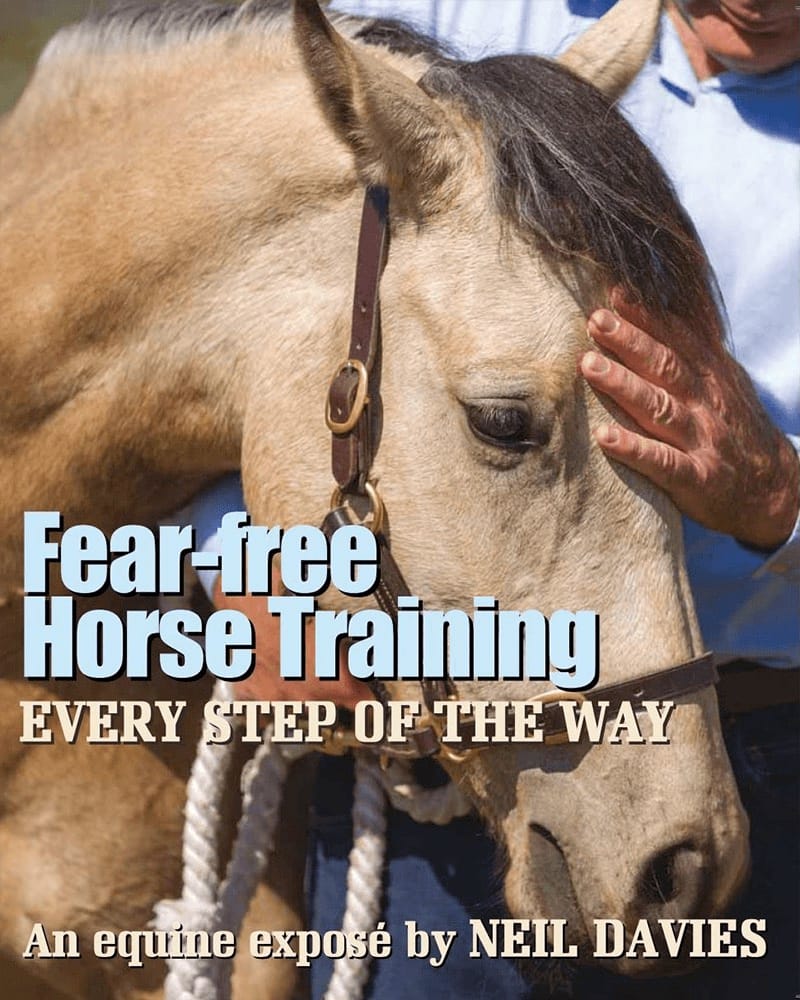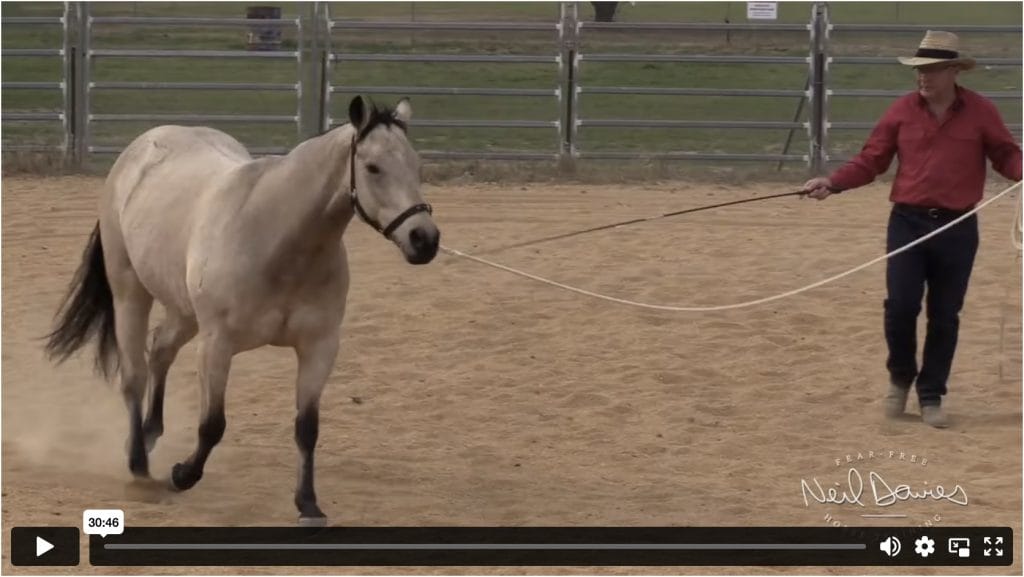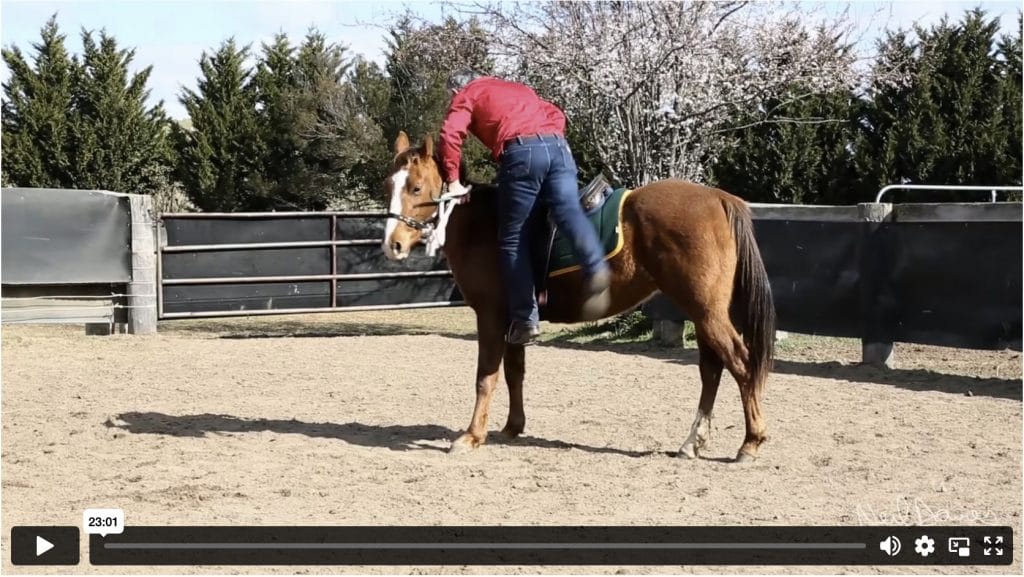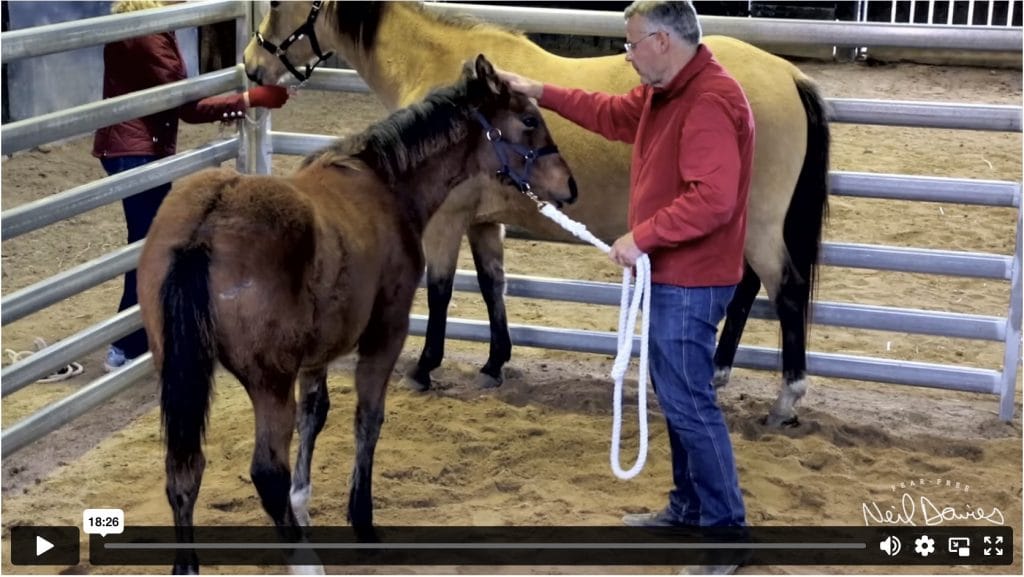Lots of trainers use a forty foot round yard for all their horse training.
The main idea seems to be for the trainer to chase the horse around the fence until the horse is tired (and sometimes exhausted).
In a round yard, every horse’s natural reaction is to run around the fence when he’s chased.
While it may appear that the horse is being taught to move in a circle, the plain fact is that he’s just running around the fence.
I always work in a square yard when I handle foals or start horses under saddle.
I never ever use a round yard.
I make sure the square yard is no bigger than 20 feet by 20 feet.
I believe round yards of any size are unsuitable for handling horses and here’s why:
In all training situations, the first and most important thing is to go to every horse and show him that you’re not going to hurt him.
A frightened horse must never be chased because chasing him will frighten him even more.
When a previously unhandled horse is roped in a round yard, he’ll be frightened by the rope and he’ll run faster and faster.
When this happens, there’s no way of stopping the horse other than jerking on the rope or running him to the point of exhaustion.
In a square yard however, a frightened horse will stop in a corner.
You can then go to the horse and show him that you’re not going to hurt him.
Or, if he hasn’t been caught, a rope can be placed on the horse and used to show him what you want.
In every situation you should go to your horse and show him what you want.
You should never keep moving a horse until he comes to you.
After all, if your horse was confident and knew what you wanted, he wouldn’t keep moving away.
In a round yard, every horse learns to run round and round the fence.
When the horse is ridden outside for the first time, you’ll find that he hasn’t learned much.
When there’s no round yard fence to rely on, the horse will move anywhere, anyhow because he hasn’t been taught to move exactly where the rider wants.
In a square yard, every horse has to be taught to move exactly where you want.
There’s no fence to rely on.
When a young horse is first ridden out of the square yard, he’s already been taught to move in an exact circle.
The horse will be under control and he’ll move where and how the rider asks.
Another thing to remember is that nobody’s perfect and we all make mistakes.
When things go wrong in a round yard, the horse will run and run and there’s no way to stop him.
In a square yard however, a horse can be stopped in a corner when things go wrong.
In a round yard, there’s nothing more frustrating than trying to approach a horse that’s hard to catch.
Such a horse has an advantage in a round yard.
He can keep running around the fence and there’s nothing you can do about it.
In a square yard, any horse can be stopped in a corner and then you can approach him.
And if you’re frightened of being kicked, you obviously don’t have the skill and experience to handle frightened horses and you should leave the job to others.
In every training situation, the biggest advantage of a small square yard is that you can approach every horse and show him that you’re not going to hurt him.
You can’t chase a horse relentlessly in a square yard, because he’ll stop in a corner.
Therefore, you won’t be tempted to use fear or fatigue as one of your training tools.

